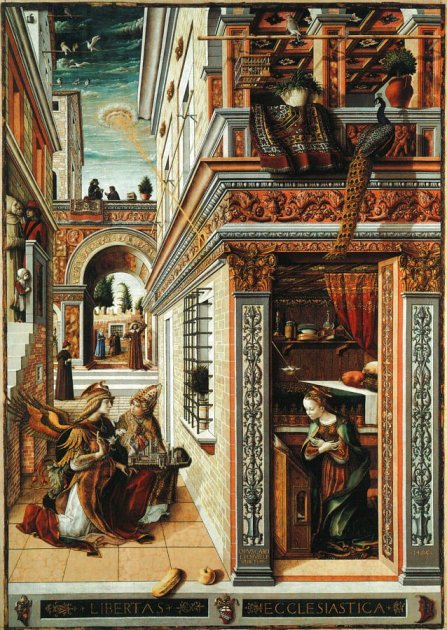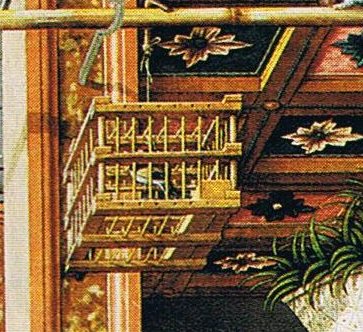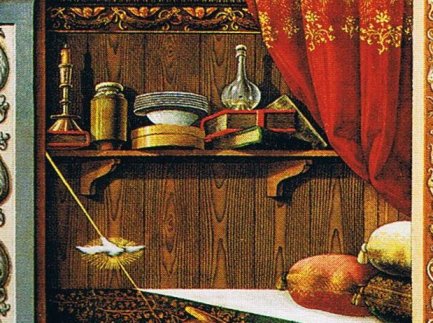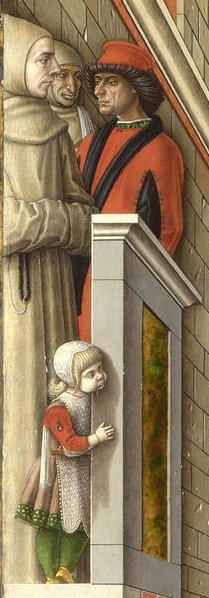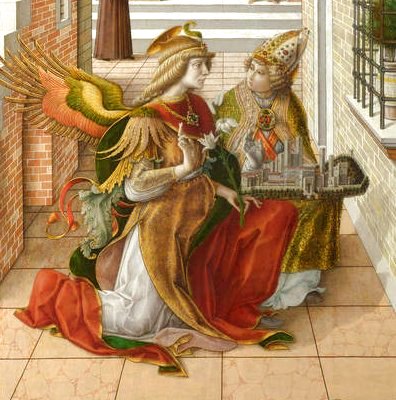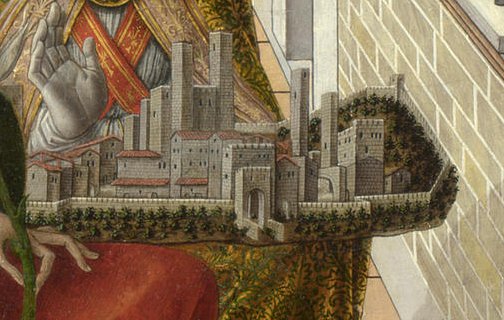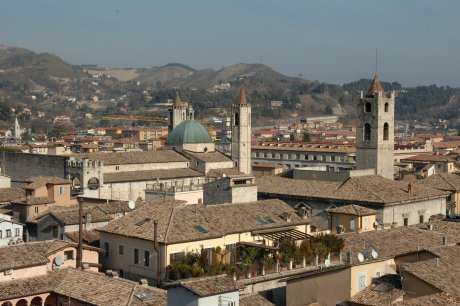|
The Annunciation with Saint Emidius, by Carlo Crivelli |
|
|
|
|
|
Here is another picture from the National Gallery that
deserves an entire visit to itself. An Annunciation, clearly, but why so
over the top? Isn't it just a little cluttered? And who is the character
busily distracting the angel when he has an important job to do? Saint
Emidius of course - we worked that out from the title of the
picture. |
|
|
Detail Much of the clutter of the picture is symbolic, though it has to be said Crivelli did like to demonstrate his skill in painting such things as peacocks and exotic carpets. The bird in the cage is a goldfinch; there is more on this here. In the room, we can see a glass jar and an unlit candle; these symbols are discussed here. The apple at the foot of the painting suggests Eve, though I'm not quite sure what the gherkin-like object refers to.* Crivelli always tried to squeeze in some fruit and veg. The coats of arms on the bottom of the picture are those of the Pope and the Bishop of Ascoli. |
|
|
|
|
|
People This Annunciation is set in a busy, if idealised, townscape, with people going about their business oblivious of the momentous events taking place. All, that, is, except for a small child. Bored with the dull conversation of the grownups, she looks down on events through innocent eyes. It is St Emidius, though, that one's eyes are drawn to. He is the patron saint of the city, martyred in 303 by pagans who objected to him smashing their idols. (One wonders what he would have made of Carlo Crivelli.) His relics are kept in the Cathedral at Ascoli. In the picture, he is carrying a model of the newly freed City of Ascoli, which, as can be seen in a recent photograph, hasn't changed much over the centuries. Saint Emidius is invoked for protection from earthquakes, necessary here, as Ascoli is only an hour's journey from L'Aquila, epicentre of the earthquake that struck in April 2009. |
|
|
|
|
|
|
|
| * A correspondent has suggested that the gherkin (or cucumber) refers to this quote from Isaiah:And the daughter of Zion is left as a cottage in a vineyard, as a lodge in a garden of cucumbers, as a besieged city. (Ch 1 v 8) And is thus a symbol of the Virgin. | |
